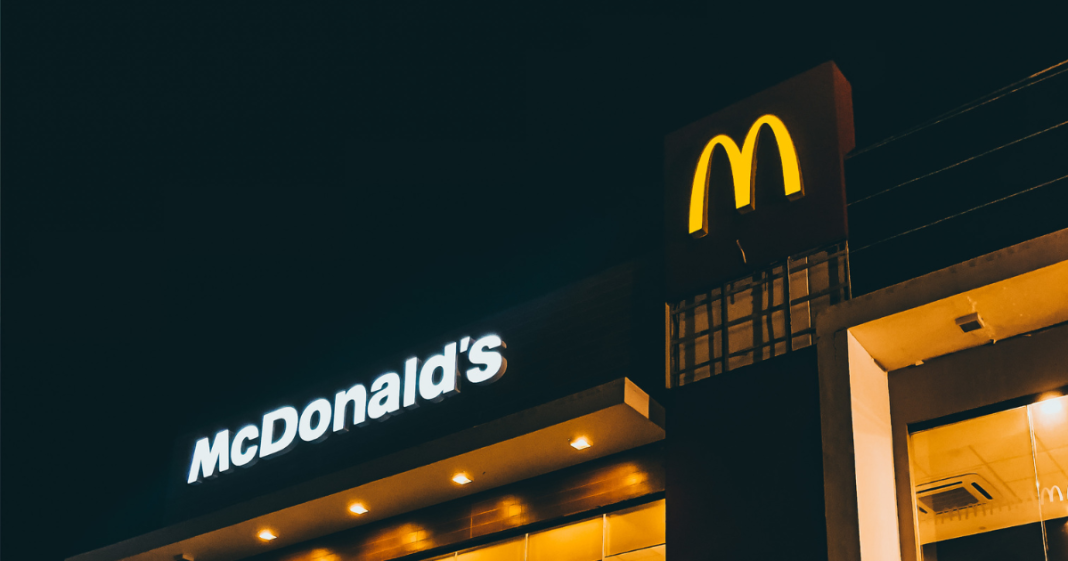McDonald’s Corporation (MCD) has once again struck a chord with customers through its clever pricing tactics. The fast-food giant’s $5 meal deal, which was first introduced in May, has turned out to be a big hit with customers feeling the pinch of inflation. Originally planned to run for just four weeks, the deal was so successful that McDonald’s extended it through the summer.
However, the timing of this extension wasn’t accidental. The move came after MCD’s global comparable sales dipped by 1%, and net revenues remained flat compared to the previous year, in the second quarter ended June 30, 2024. The company needed a way to attract more customers, and this budget-friendly bundle turned out to be the perfect solution, with 93% of franchise owners supporting the extension until the end of August.
The bundle, featuring a choice between a McDouble or McChicken, fries, nuggets, and a drink for just $5, became a crowd favorite, with nearly two-thirds of buyers opting for the McDouble. Buoyed by its success over the summer, attracting “tens of millions” of customers, McDonald’s extended the deal once again, this time through December in select U.S. markets.
Joe Erlinger, President of MCD’s USA, stated, “Together with our franchisees, we’re committed to keeping our prices as affordable as possible, which is why we’re doubling down with even more ways to save.”
While the $5 meal deal is certainly a wallet-friendly option, it’s more than just a low price. It’s the company’s calculated response to inflation. As grocery bills and dining-out costs climb, a $5 meal serves as a welcome relief, easing the financial pressure on customers. This strategy is especially targeted at middle-income consumers, a large part of McDonald’s customer base, who typically earn between $48,000 and $65,000 annually.
Moreover, these offers reflect the chain’s commitment to maintaining value, a word that was mentioned nearly 90 times during the company’s most recent earnings calls. And judging by the continued popularity of these deals, it’s clear that customers are “lovin’ it.”
Alongside the value deal, McDonald’s has rolled out a series of other promotions, like $0.50 Double Cheeseburgers on National Cheeseburger Day and $1 10-piece Chicken McNuggets each week. Promotions like free medium fries with any $1 purchase on Fridays, running through the end of 2024, further add to the company’s value-driven approach. These offers aren’t just about saving customers money; they’re also designed to drive more foot traffic into restaurants. The company aims to draw customers in, with the hope they’ll spend more by upgrading their meals or dining with others.
Since the launch of the bundle in late June, McDonald’s has seen a notable increase in in-store visits. Data from foot traffic analytics firm Placer.ai revealed that on the day of the launch, June 25, McDonald’s experienced its busiest Tuesday of the year, with an 8% spike in visits compared to its year-to-date average. Similar trends continued into July, underscoring how well the $5 bundle resonated with consumers.
Does This Move Call for a Price War?
As grocery price inflation shows signs of slowing, more consumers are opting to eat at home. According to the U.S. Census Bureau, restaurant sales increased by 2.7% year-over-year to $94.50 billion in August but remained flat over the last four months. When adjusted for inflation, the sales actually declined by 1.3% compared to August 2023, as reported by the National Restaurant Association.
In this competitive landscape, where consumers hold the power, MCD isn’t the only fast-food chain experiencing increased customer visits. Taco Bell announced a $7 Luxe Cravings Box alongside its $5 Taco Discovery Box and Cravings Value Menu in June. Similarly, Burger King extended its $5 “Your Way Meal” bundle and introduced new items under its “Fiery Menu.” Wendy’s has also joined the fray, offering a $3 breakfast bundle and a $5 combo known as the “Biggie Bag.”
While these promotions may attract short-term traffic, experts caution that they can also set a precedent for consumer expectations regarding discounts. Kristin Lynch, senior director of strategy and analytics at Paytronix, warned, “McDonald’s will have to consider the value associated with their loyalty program.” He believes balancing value and customer expectations is essential, with 166 million loyal members contributing 25% of system-wide sales.
Amid signs of slowing consumer demand, the chain has announced a new store format emphasizing digital kiosks. Some locations are upgrading from traditional menu boards to digital screens designed to showcase promotions and popular items, while printed menus will still be available for those who prefer ordering the old-fashioned way. These enhancements aim to meet the increasing demand for digital options while improving service speed and accuracy.
Bottom Line
As consumers tighten their budgets amid rising prices, fast-food chains are struggling to attract lower-income customers. A recent survey found that nearly 80% of Americans have reduced their fast-food spending because they find it too expensive. In this context, McDonald’s decision to extend its $5 meal deal into winter reflects a strategic response to an ongoing economic struggle that has yet to fully recover.
What started as a summer special has now become an important strategy to bring back budget-conscious diners. This move addresses complaints about rising prices and highlights McDonald’s focus on offering value during tough times. While the company continues to introduce deals, it’s also working on improving its marketing and cutting costs to boost sales.
For investors, MCD’s resilience and ability to adapt its marketing strategies make it a compelling investment opportunity. Therefore, investors could consider scooping up this fast-food giant’s shares, which have returned more than 15% over the past three months.


